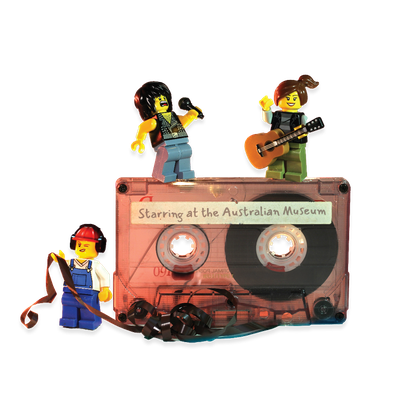Your search returned 2119 results
By Page Type
By Tag
- fish (966)
- blog (696)
- fishes of sydney harbour (401)
- First Nations (299)
- Blog (236)
- AMRI (169)
- archives (164)
- Eureka Prizes (146)
- Aboriginal and Torres Strait Islander (135)
- insect (126)
- Ichthyology (124)
- geoscience (109)
- minerals (102)
- climate change (100)
- podcast (94)
- Fish (91)
- Anthropology (89)
- International collections (80)
- Minerals Gallery (78)
- wildlife of sydney (78)
- Labridae (77)
- frog (74)
- gemstone (70)
- photography (66)
- history (64)
- Mollusca (60)
- gem (59)
- staff (59)
- Birds (56)
- Gems (56)
- Indonesia (56)
- education (56)
- shark (55)
- AMplify (54)
- people (53)
- earth sciences (50)
- exhibition (50)
- past exhibitions (50)
- Gobiidae (48)
- sustainability (46)
- Pomacentridae (45)
- Serranidae (44)
- lifelong learning (42)
- science (42)
- Earth and Environmental Science (41)
- Syngnathidae (41)
- Ancient Egypt (40)
- Bali (40)
- bird (40)
- dangerous australians (40)
-
Emily Hotham
https://australian.museum/learn/collections/natural-science/herpetology/emily-hotham/Emily Hotham is a conservation biologist with a passion for amphibian ecology and conservation.
-
Brett Ogier
https://australian.museum/get-involved/staff-profiles/brett-ogier/As Chief Financial Officer, Brett Ogier is responsible for the Museum’s financial and risk management, financial planning processes, performance monitoring, and financial reporting to stakeholders.
-
Indiana Riley
https://australian.museum/get-involved/staff-profiles/indiana-riley/Indiana Riley, Technical Officer, Ichthyology
-
Alysse Cutajar
https://australian.museum/get-involved/staff-profiles/alysse-cutajar/Alysse Cutajar is the Quality Officer at the Australian Centre for Wildlife Genomics at the Australian Museum.
-
Dr Ryan Shofner
https://australian.museum/get-involved/staff-profiles/ryan-shofner/Dr Ryan Shofner is the Barcoding Manager, Collection Enhancement Project at the Australian Museum.
-
Samantha Ordóñez-Flores
https://australian.museum/learn/collections/natural-science/herpetology/samantha-ordonez-flores/Samantha Ordóñez-Flores is a PhD student at UNSW Sydney and the Australian Museum.
-
Frankie Greene
https://australian.museum/get-involved/staff-profiles/frankie-greene/Frankie Greene is the Head of Development at the Australian Museum.
-
Alison Mercieca
https://australian.museum/get-involved/staff-profiles/alison-mercieca/Alison Mercieca is a Project Officer (Archaeology) at the Australian Museum.
-
Elizabeth Reed
https://australian.museum/get-involved/staff-profiles/elizabeth-reed/Elizabeth Reed is a Collection Care Conservator at the Australian Museum.
-
Stuart Humphreys
https://australian.museum/get-involved/staff-profiles/stuart-humphreys/Stuart Humphreys is a Digitisation Officer, Photographer, Cultural Collections Enhancement at the Australian Museum.
-
Discover more
2025 Australian Geographic Nature Photographer of the Year
Special exhibition
Free entry
Now open -
Discover more
Unfinished Business
Special exhibition
Free entry
Now open -
Discover more
Wansolmoana
Permanent exhibition
Free entry
Open daily -
Find out more
Burra
Permanent kids learning space
Free entry
10am - 4.30pm![]()
-
Discover more
Minerals
Permanent exhibition
Free entry
Open daily![]()




